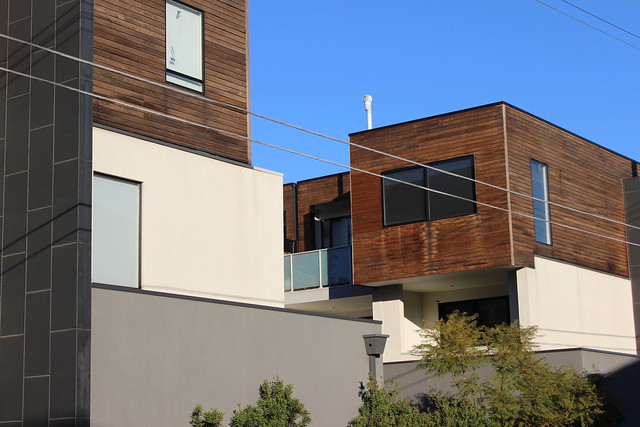Are more people living in apartments now than in 1954?
65 years ago the Melbourne and Metropolitan Board of Works (MMBW) released the Melbourne Metropolitan Planning Scheme. This formed the foundations for our current planning system. Some aspects, like car parking requirements, remain exactly the same.
Combing through the Scheme and its background reports yield some fascinating insights for what town planners considered to be best practice at the time.
Underpinning the Scheme are a series of surveys and analysis reports that also have some interesting statistics about the urban form and character of the city.
Pages 56 to 58 of the main background report talk about residential development and includes this table (as well as some gorgeous density maps):

This raises the question: are there more apartments in Melbourne (as a percentage of total dwellings) than in the 1954?

It is important to note here that the Censes conducted during this period specifically excluded Aboriginal and Torres Strait Islanders, including any households occupied by them. This was not rectified until 1967.
Comparing the Scheme’s data to the 2016 Census for Greater Melbourne (GCCSA) is a little difficult. This is because information is published under different grouped definitions, as explained below.
The 1954 MMBW report has four definitions of housing structure:
- Private House
- Sharing Private House
- Flats
- Tenements
The definitions provided at the time by the Commonwealth Statistician (and noted in the MMBW report) at the time are:
“For Census purposes a ” flat” is defined as part of a house or other building ordinarily intended for occupation by a separate family group, and is a self-contained dwelling unit with both cooking and bathing facilities.
A ” tenement ” is part of a house or other building ordinarily intended for occupation by a separate family group but is not a self-contained unit, and consists in the main of a room or room with cooking facilities.
In the case of the remaining private houses shared by more than one family, separate schedules were furnished for each portion occupied separately and these portions are shown in the tables as separate dwellings under the heading “Share of Private House“.”
In comparison, the 2016 Census definitions focus entirely on the physical structure of the dwelling rather than any sort of living arrangements (now categorised under ‘Household composition’).
For this reason, I think that only two overarching categories can be used to fairly compare these two sets of data:
- Separate house
- Flat or apartment
The first category includes the following 2016 dwelling structures:
- Separate house
- Semi-detached, row or terrace house, townhouse etc. with one storey
- Semi-detached, row or terrace house, townhouse etc. with two or more storeys
The second category includes the following 2016 structures:
- Flat or apartment in a one or two storey block
- Flat or apartment in a three storey block
- Flat or apartment in a four or more storey block
- Flat or apartment attached to a house
- House or flat attached to a shop, office, etc.
Bringing that all together, this is the comparison that we get (2016 data from ABS Tablebuilder):

In summary, the percentage of apartments of total dwellings in Melbourne has increased by 66 percent between 1954 and 2016.
It’s not as drastic a change as I originally suspected and it would be interesting to track the trend over time from Census and other information.
Additional notes
The MMBW repeats the findings of the 1944 Commonwealth Housing Commission report on higher-density housing needs and preferences:
“The Commission reported that both houses and flats are necessary according to the particular way of life and circumstances of persons to be housed. The persons or families for whom flats or multi-unit dwellings are particularly suited are:
(a) Single persons who wish to have their own private accommodation as distinct from boarding houses or hostels.
(b) Married couples without children or perhaps one child who do not wish to garden and require more time to pursue other interests.
(c) Persons of either the circumstances set out in (a) and (b) who are employed in occupations which require periodic transfer such as railway and postal workers, teachers, service people and bank clerks,
(d) Some middle-aged and elderly persons whose families have grown up and who do not desire to continue with a house too large for them and with the responsibility of maintaining grounds.”
And:
“The rising cost of building private houses and the increasing distance of available new building sites from the city centre are already causing many young people to seek old houses or flats in convenient inner suburbs rather than build new houses in the more distant suburbs.”
75 years later, we are still finding exactly the same thing. Once again, history repeats itself.